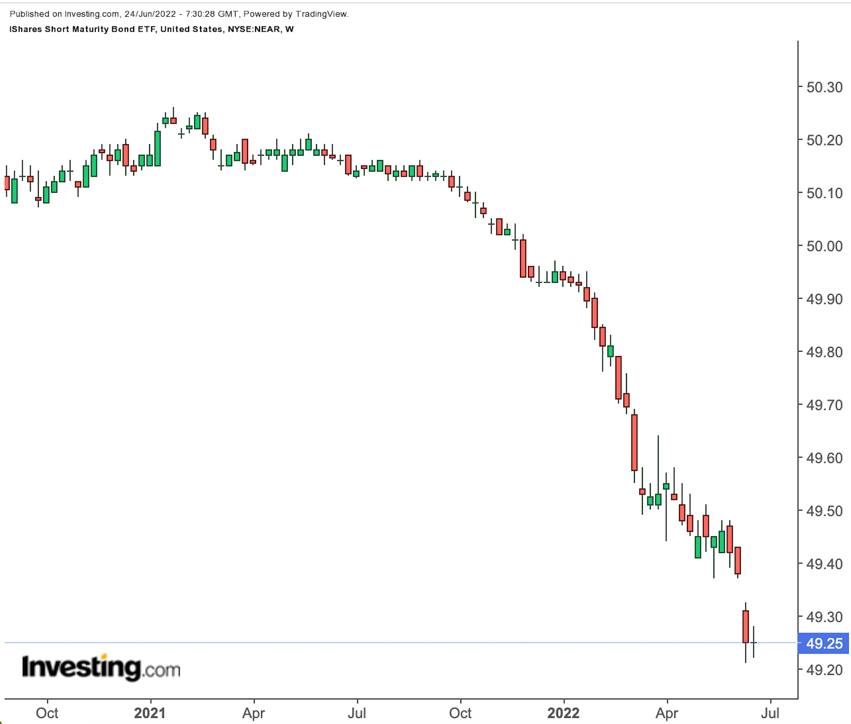Investors wishing to reallocate risk have been looking at bond exchange-traded funds (ETFs), which may hold corporate, municipal, Treasuries, or international bonds. In recent days, transactions in US bond ETFs have hit record volumes while investors reposition portfolios in anticipation of further rate hikes by the Federal Reserve (Fed).
Analysts also noted trading volumes for corporate bond funds spiked to a record $25 billion. Similarly, government bonds saw $18 billion worth of trades.
Bond ETFs differ from traditional bonds in several ways. For example, while bonds have a fixed maturity date the principal is due, bond ETFs never mature. Thus, when a bond in a given fund's portfolio expires, another bond is bought to keep the portfolio's maturity constant.
Most readers would well know:
"A bond's term, or years to maturity, is usually set when it is issued."
But maturity is sometimes confused with duration or the sensitivity of a bond's price to moves in interest rates.
Duration is expressed in years. Let's assume a bond has a duration of 3 years. When interest rates go up by 1%, the bond's price will decrease by approximately 3%. Most investors who expect rates to increase typically consider bonds with shorter duration.
In the case of bond ETFs, duration typically represents the weighted average of the duration of individual bonds in the portfolio. So if a bond fund has a duration of five years, a 1% increase in interest rates should lower the overall net asset value of the ETF by 5%.
Finally, we should mention the concept of yield to maturity (YTM), or the annualized return an investor will receive when holding a bond to maturity. And for an ETF, YTM represents the weighted average yield of all bonds in the portfolio if they were held to maturity.
With that information, let's examine a bond ETF for diversifying portfolios.
iShares Short Maturity Bond ETF
- Current Price: $49.25
- 52-week range: $49.21 - $50.17
- Average Yield to Maturity: 3.24%
- Expense ratio: 0.25% per year
The iShares Short Maturity Bond ETF (NYSE:NEAR) invests in short-term bonds. The fund was first listed in September 2013, and net assets stand close to $4.5 billion. 
About a quarter of the portfolio is in investment-grade industrials; next come non-US credit-related, investment-grade financials, asset-backed securities, and commercial mortgages.
Bonds on NEAR's roster have varying maturities but are all of the short duration. As a result, the effective duration is 0.54 yrs or less than 200 days. Put another way; if interest rates go up 1%, then the net asset value should decline by about 0.5%. Therefore, investing in this ETF is close to holding cash.
Meanwhile, the weighted average maturity is 1.38. In other words, the portfolio would fully mature in 1.38 years. Thus, if the ETF were to close without liquidating, it would be 1.38 years before the holdings would mature, returning the principal.
NEAR currently has 374 holdings. Among the top names on the roster are Morgan Stanley (NYSE:MS), Bank of America (NYSE:BAC), Volkswagen (ETR:VOWG_p), JPMorgan Chase (NYSE:JPM), Citigroup (NYSE:C), and AbbVie (NYSE:ABBV). They are companies most investors are well familiar with. And as they are investment grade, the credit risk of the ETF is low.
So far in the year, NEAR is down 1.38%. This diversified bond fund does not completely eliminate broad market volatility. Yet, it could appeal to readers looking for an ETF to park their cash for the short term.
